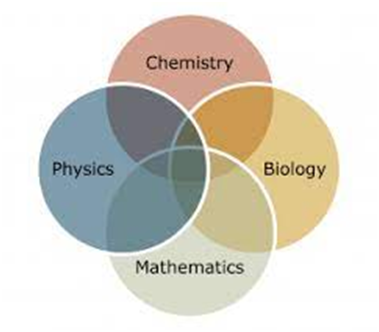Study the fundamental differences between science and
engineering by comparison between eye and camera, bird flying and aircraft.
Eye and Camera
Structure of camera and human eye along with the similarities
and difference is explained.
(Comparison between camera and eye)
Similarities between camera and eye
Part of the Corresponding Function
Camera part of eye
-----------------------------------------------------------------------------------------------------------
Aperture Pupil -------------------- Light
enters the eye through the
Pupil/aperture
Diaphragm Iris -------------------- The
iris/ diaphragm regulates the
amount of light entering the
eye/camera
lens Lens --------------------- Focus light and image on the retina in eye and film in camera
Film Retina ---------------------- The
part on which images are
formed
Black paint Choroid ---------------------- The
dark colored melanin
Pigment in the choroid and
black
paint in the camera
absorbs light and limits reflections
within the eye that could degrade
vision
Differences
between camera and human eye
CAMERA HUMAN EYE
Focal length of lens is fixed Focal length of the lens be changed
Photographic film retains the Retina
retains the impression of
Image permanently an
image for only 1/16th second
A photograph has to be changed Same retina can be used viewing
For getting next image viewing
unlimited images
Image is formed on photographic Image is formed
on retina which
Film and processing can be done through is further processed in brain
Computer
BIRDS AND
AIRCRAFT
Both
birds and planes are capable of flying and the science has shown that a
principle
Behind this ability of flying in both cases is same but the mechanism is different
The basic principle of plying is based of
Bernoulli’s principle
The
particles in air are always moving. Air like a fluid will always move from a
high pressure area to a low pressure. He found that fast moving air has lower
pressure and slow moving air has higher pressure. It is this Bermoulli’s
principle that helped us how birds and airplanes can fly.
When air rushes past the wing of a
plane, it flows above and below the wing. The top part of the wing is rounded
and the bottom is fairly straight. Therefore, air rushing over the top of the
wing has to travel a greater distance to the back of the wing compared to the
bottom
As a result, the air on the top of the
wing has to travel faster to keep up with the air underneath. This creates a
low pressure area on the top on the wing and high pressure area on the bottom.
The difference of pressures on the surfaces of the wing creates lift(the upward
force that keeps planes and birds aloft,)
Forces that act on birds during flight
01 Lift: The force that pushes upward, created by the movement of air over and under the wings.
02 Drag: The force of the air pressing against the birds and slowing them down.
03 Thrust: The force that moves the bird forward, caused when a bird flaps its wings.
04 Propulsion: It means to push forward or drive an object forward. A propulsion
system is a machine that produces thrust.
Newton’s Third Law: For every action there is an equal and opposite reaction. Thrust often comes from muscles or engines.
Characteristics of Birds
Important things that birds have that help them keep their weight low are:
01 Feathers---are light, flexible, used for protection and also to keep the bird warm
02 Hollow bones:---- are very light
03 Strong muscles
A comparison
between flying of aeroplane and flying of birds is shown in below.
Comparison between
flying of aeroplane and birds
Function part of the
aeroplane part of the
birds
Lift propellers/airfoil Muscles
Drag Streamlined
shape Light weight
skeleton and
streamlined shape
Thrust Movement of
aeroplane Flapping of wings
and wings by engine
Propulsion Engine Muscles






1 Comments
send me videos
ReplyDelete